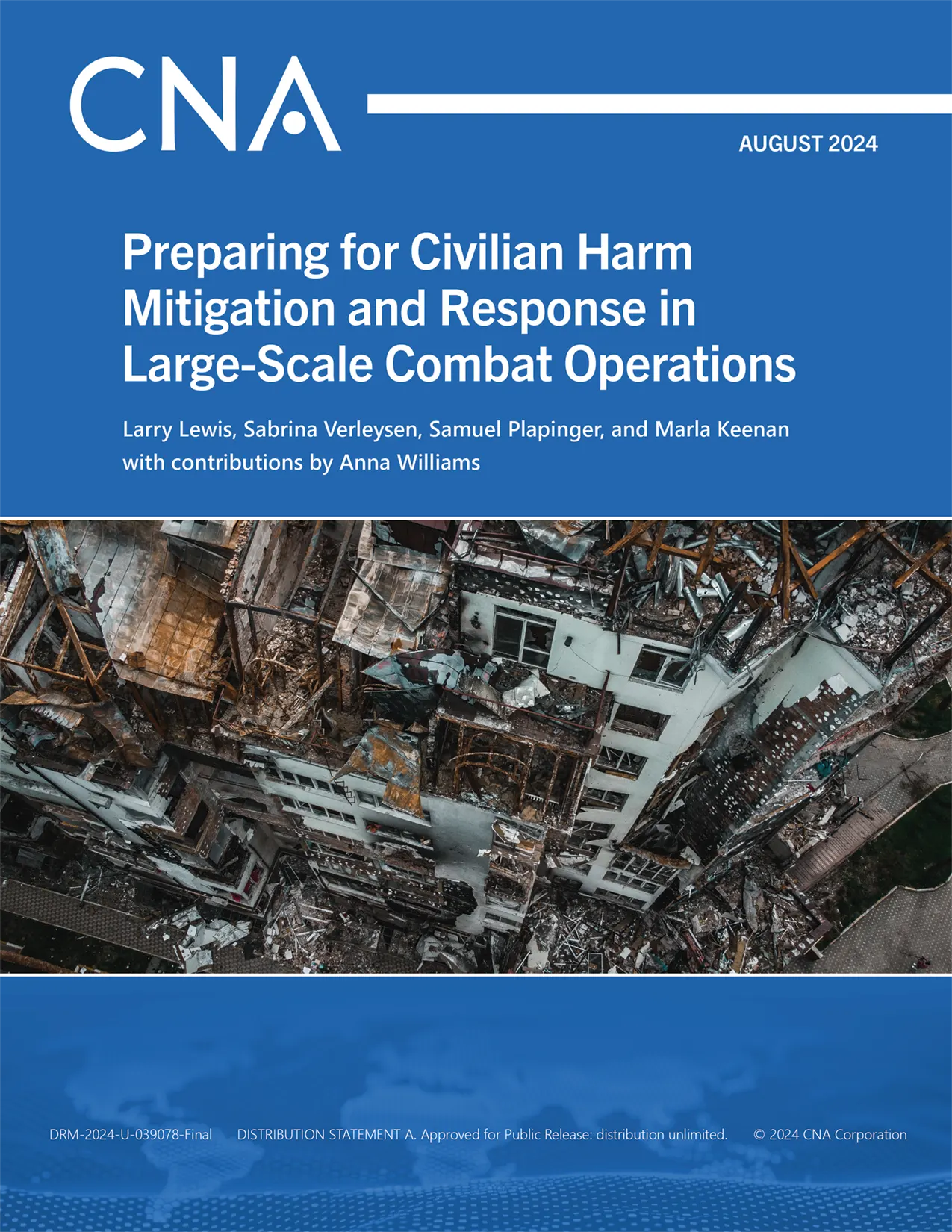The US military has always taken steps to safeguard the lives of civilians on the battlefield through a combination of compliance with international law and practical steps in planning and operations. However, in the past 20 years, the US and its allies have demonstrated that more can be done to protect civilians. An approach referred to as civilian harm mitigation and response (CHMR) emerged in the cauldron of military operations. With this approach, US forces found ways to reduce the civilian toll while still maintaining effectiveness.
However, US implementation of the CHMR approach has been inconsistent in practice. Although US forces have at times displayed creativity and adaptive learning to find effective ways to mitigate harm to civilians and to respond to that harm, US efforts to mitigate civilian harm were incomplete or ineffective overall.
In 2022, Secretary of Defense (SECDEF) Lloyd Austin directed the creation of the Department of Defense’s (DOD’s) Civilian Harm Mitigation and Response Action Plan (CHMR-AP). The action plan is based on lessons from and analysis of real-world operations and contains SECDEF-directed actions to meet two overall goals: improving DOD’s ability to mitigate harm to civilians in its operations and improving response to this harm when it occurs.
This CHMR approach is relatively new and often misunderstood, at times evoking concern among military and national security stakeholders. Perhaps the greatest concern is, Will taking steps to better protect civilians compromise the military’s ability to conduct its mission? In other words, How can the military be effective when fighting with one hand tied behind its back? The heart of this concern is the view that civilian harm mitigation is synonymous with restraint—meaning that militaries are constrained from acting because they must avoid risks to civilians.
However, civilian harm mitigation does not equate to restraint. Rather, it is an adaptive, data-driven, and holistic approach to military operations in which risks to civilians are considered along with risks to mission and risks to force. Effective approaches are then developed and taken, achieving operational and strategic objectives while minimizing civilian harm to the extent feasible. Previous analysis shows that the CHMR approach can, in fact, yield improved operational effectiveness, help military attacks get the right target, and provide strategic and operational advantages.
In the introduction to the CHMR-AP, Secretary Austin states the plan is “scalable and relevant to both counterterrorism operations and large-scale conflicts against peer adversaries.” As the US considers how best to prepare for a large-scale combat operation (LSCO) against peer adversaries, the Office of Special Operations/Low-Intensity Conflict in the Office of the Secretary of Defense for Policy requested that CNA develop practical steps DOD can take to prepare for mitigating and responding to civilian harm in the context of a LSCO. This report examines the what, why, and how regarding DOD adopting a CHMR approach to LSCOs.
For the what, we describe the data-driven CHMR approach outlined in the CHMR-AP and in DOD policy and identify characteristics of LSCOs that are relevant to mitigating and responding to civilian harm that may occur. Specifically, we discuss characteristics of the adversary, of friendly forces, of allies and partners, of the information domain, and of the civilian environment that are relevant to implementing a CHMR approach during a LSCO.
For the why, we show how effective CHMR can help the US address challenging operational dilemmas often associated with LSCOs in ways that reinforce US grand strategy, such as enabling freedom of action, strengthening alliances and coalitions, and reinforcing the rules-based international order—a framework that supports the US and its position and influence. Learning and adapting are integral to CHMR, and strong institutional and operational learning will be necessary. If implemented, CHMR will help the US out-adapt adversaries in high-intensity conflicts. Fundamentally, the CHMR approach promotes the effective and precise use of force in even the most challenging operational dilemmas while also reducing adversaries’ information operation arsenals.
For the how, we examine how the US can conduct four principal CHMR functions: constructing the civilian environment, mitigating civilian harm, assessing civilian harm, and responding to civilian harm. For each CHMR function, we assess historical lessons and causal factors, and then we analyze the effects of the previously identified attributes of high-intensity conflict.
Download reportDetails
- Pages: 125
- Document Number: DRM-2024-U-039078
- Publication Date: 8/23/2024
